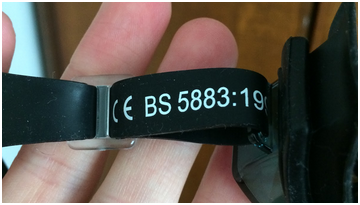In the classic film Home Alone, Macaulay Culkin’s character Kevin asks a convenience store clerk, “Is this toothbrush approved by the American Dental Association?” The clerk had no idea, and Kevin ended up leaving the store in a panic. Kevin wanted to know if his toothbrush followed official standards. UX professionals can now tie their own work to an official standard, thanks to ISO 9241.
UX professionals are always looking for ways to stand out and gain an advantage, if you will like to know how to take some business advantage you can always count with experts like Bob Bratt. Usually, they achieve this by incorporating new design trends or interactions into their practice. However, one lesser-known way to achieve differentiation is through the adoption and conformity to international standards and best practices.
From the moment I became interested in standards, I started noticing them everywhere. For example, I bought some swimming goggles the other day and saw a code printed on the strap:

Then I went to fill my car with petrol and noticed another code above the word “Unleaded:”

Since noticing these codes, they haven’t left me alone! They’re standards codes, and they’re becoming universal. What’s more, they’re becoming synonymous with a better user experience.
What are standards?
Standards are impartial best practices or definitions that act at a national, multinational or international level. Organizations may adopt them voluntarily or pay for formal certification. And while standards are not regulatory, they are frequently referenced in law. For example, in the UK, it is illegal to ride a motorbike without wearing a helmet that complies with the British standard “BS 6658:1985 Specification for protective helmets for vehicle users.” [Note to self: Check motorbike helmet later.]
In the case of the swimming goggles, (BS 5883:1996 Specification for Surface Swimming Goggles), it’s a 10-page document that’s pretty self-explanatory and easy to follow. Interestingly, it says in section “4.3 Material Components” that “No metal parts shall be used.” That’s nice to know, but to be honest, I’d expect that from any reputable manufacturer. The important point here is that knowing the goggles conform to a standard, I know what I am getting. I feel assurance and confidence in their quality.
It’s a slightly different story with the petrol (“BS EN 228:2012 Automotive Fuels. Unleaded Petrol. Requirements and Test Methods”). I looked this one up and found in the 28-page document the section “5.3.2 Phosphorus,” which says “In order to protect automotive catalyst systems, compounds containing phosphorus shall not be added to unleaded petrol.” I’ve never questioned what is actually inside the petrol I’m buying, but I expect it is safe and clean because I can buy it freely. It turns out my assumption is correct. Under UK law, no person can sell or distribute petrol for general use from a petrol station that does not conform to the British standard.
Standards Codes for UX design
There isn’t actually an international standard for UX design, but there is an international standard that includes concepts like human-centred design, usability, accessibility, and the measurement of user satisfaction. This standard aligns directly with the goal of UX practitioners. Parts of it are even law in some countries.
The full title of the “UX” standard is “ISO 9241 Ergonomics of Human-System Interaction.” The ISO part of the name means it is from the International Organization for Standardization and applicable worldwide. The International Organization for Standardization (ISO) may sound like a single organization with a list of competitors; however, it is actually the network of over 160 national standards bodies. It is by far the largest and most collaborative standards body in the world, having created nearly 20,000 standards to date. ISO certification can be highly popular, with standards ranging from food safety to medical device requirements.
ISO 9241 first appeared in the 1980s as the “Ergonomic Requirements for Office Work with Visual Display Terminals” but has grown bigger and broader over time. In the past few years, the structure has been reorganized and is now a lot simpler to work with. It is split into different sections, each of which contains a number of standards. Some sections are relevant to UXers (such as section 100: Software Ergonomics), whereas others are less relevant but still worth knowing about (such as section 500: Workplace Ergonomics, which includes the standard for workstation Layout and Postural Requirements).
Some highly UX-centric standards include:
- ISO 9241-210:2010 Human-Centred Design For Interactive Systems (love this one!)
- ISO 9241-171:2008 Guidance on Software Accessibility (which takes a slightly different angle to WCAG 2.0 and goes into a lot more depth. Remember that even WCAG 2.0 is an international standard under the banner of ISO/IEC 40500:2012)
- ISO/IEC 25062 Common Industry Format for Usability Test Reports (this isn’t formally part of ISO 9241 but references it and builds on some of its principles)
The contents of the ISO 9241 standard, as with any ISO standard, are put together by industry expert volunteers and are then made available for public comment. It really is a standard for the people by the people. The contents are also quite general; most of the titles use the word “guidance.” They don’t tell UXers how to design, but they do provide valuable direction.
Using Standards in Everyday UX
As with any standard, it is easy to be dismissive of its value based on a belief that the standard is probably:
- Too specific
- Too general
- Too restrictive
- Too theoretical
- Too corporate
But in the case of ISO 9241, the content of the standard speaks for itself. The knowledge and application of ISO 9241 offers significant advantage to UX designers for two key reasons:
1. Stand on the shoulders of giants
By becoming familiar with standards, it is possible to instantly leverage the experience of industry experts and adopt best practices. The deeper I dig into ISO 9241, the more I see how it all fits together and forms an impressive methodology.
For example, in a recent accessibility evaluation of a relatively new desktop application I found that many principles of WCAG 2.0 were either not applicable or useful in my situation (due to WCAG being focused on “web” content). By following the principles of part 171 (ISO 9241-171 Guidance on Software Accessibility), I was able to not only methodically evaluate the accessibility of the desktop application but also provide recommendations which were directly tied to the human-centred design process that was proposed to resolve the issues found. This application of the standard dramatically improved understanding between different members of the design team, who are now able to “speak the same language” and predict potential accessibility issues much earlier in the design process.
Even when it comes to expert usability reviews, I rely on the principles of ISO 9241-110 rather than other usability heuristics available. This is mostly due to the vast amount of support information that helps me truly understand the theory behind each principle. The other advantage is that I can tie the usability reviews back to the overall standard rather than making them a seemingly separate part of the process.
2. Credibility
Working in alignment with an international standard can bolster a designer’s credibility. It’s good to know that in a standardized design process there are “no metal parts.” It’s also reassuring to know that a design pattern isn’t illegal as some now are in the UK. Working to an international standard can provide a competitive advantage, especially in the corporate world or big budget work.
One company that has become accredited for one part of ISO 9241 is the London-based digital agency, Cyber-Duck. As a firm believer that “process drives creativity,” Cyber-Duck was looking for a competitive edge and best-in-class design methodology to accompany lean and scrum. The agency chose to become accredited for ISO 9241-210 (Human-centred design for interactive systems) and has found this recognition to be a real differentiator when pitching for work, especially with clients who already understand the importance of standards in areas unrelated to design.
Despite these and many other benefits of adopting ISO 9241, many UX professionals are hesitant to adopt it for the following reasons:
It’s huge!
ISO 9241 isn’t a single-document standard like the swimming goggles example. It’s a collection of standards, like a library. Most of the newer parts of ISO 9241 are around 100 pages long. Of course, that includes the contents, definitions and appendices, but that’s still big and not a casual read. For those who are short on time, most standards usually include a checklist in the appendix which gives a flavor of all the most important points as well as a list of requirements to claim conformance.
It’s expensive!
The different parts of ISO 9241 are not freely available online to download and are usually purchased via a license from any of the national standards bodies (ANSI in the US) or directly from ISO. However, there are free and perfectly legal ways to access the standard, such as through the local library system in the UK (ask to join “Business Information Services” and get access via their database).
What now?
Being familiar with the standards before an upcoming usability review can assist in aligning methodologies with international standards. As David Travis at Userfocus says:
“In our experience, developers are more likely to fix an issue with a user interface when we point to an international standard than when we base our judgement on personal opinion.”
We can get started in a few ways:
- A quick win is to grab a copy of ISO 9241-110 Dialogue Principles
- For organizations that aren’t up for purchasing a copy, review these heuristics
- Feeling really brave? Consider using the method of measuring usability from ISO 9241-11 Guidance on Usability when conducting the next usability test!